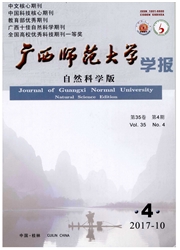

 中文摘要:
中文摘要:
为了得到准确的电动自行车差异化管理量化决策,本文根据2014年南宁市调查数据,基于两阶段聚类方法,对电动自行车出行者进行差异化分类,在此基础上构建南宁市电动自行车与公交车之间的出行方式选择BNL(binary-nomial logit)模型,并运用SPSS 22.0对模型参数进行标定;最后结合南宁市实际情况对模型结果进行分析。本文研究结果表明:在公共交通缺乏或服务水平不高的条件下,电动自行车是中低收入居民主要的通勤出行方式之一;在提高常规公共交通服务水平的情况下,不分类模型有可能高估常规公交的分担率提高程度,分类模型能更有效地反映不同人群的差异性。本文提出的方法能为探讨南宁市电动自行车差异化管理策略提供更准确的量化决策支持。
 英文摘要:
英文摘要:
According to the survey data of Nanning in 2014,electric bicycles are categorized using twostep cluster method to get accurate differentiation management quantitative decision of electric bicycles.A BNL mode is developed to describe people's mode choice behaviors when electric bicycles and buses are accessible.And the SPSS 22.0software is used to calibrate model parameters.Finally,the results are analyzed considering the actual situation in Nanning.The results show that electric bicycles is one of residents' main travel modes when public transit system is not accessible or underdeveloped.When the service level of regular buses is improved exclusively,uncategorized models might exaggerate the increase in the sharing rate of public transit system.The categorized models could reflect the differentiations among different groups more effectively.The proposed method can provide more accurate quantitative decision support for exploring the differentiated management strategy of electric bicycles in Nanning.
 同期刊论文项目
同期刊论文项目
 同项目期刊论文
同项目期刊论文
 期刊信息
期刊信息
